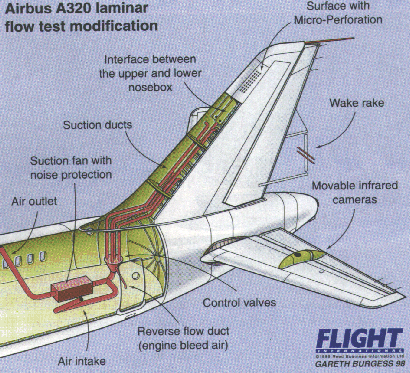
Max Kingsley-Jones/TOULOUSE
Airbus Industrie will launch a laminar flow technology flight test later this year as part of its probe into the potential cost and emission reductions resulting from a lessening in aircraft skin drag.
The consortium is modifying the tailfin of the prototype A320-100 for tests due to begin in the second half of this year.
The modifications include the installation of a new external skin with micro-perforations, a suction fan and ducts and a wake rake on the rudder.
Airbus senior vice-president of engineering Alain Garcia says that, if the findings confirm Airbus' calculations, the possibility of a retrofit programme for the in-service fleet will be examined. Airbus estimates that laminarity will provide a 10% reduction in wing drag, and almost 5% for the empennage and nacelles - figures which would result in a 13% cut in fuel on long haul flights.
Garcia says that taking a case study of a 12-aircraft long haul fleet operating about 400 flights a year on routes over 9,250km (5,000nm), and with fuel costing 20¢/litre, laminarity would provide fuel savings of some "-40,000t per year, equivalent to $9.9 million".
Taking the same case study, Garcia says, annual hydrocarbon emissions would be reduced by 12t, carbon monoxide by 168t, carbon dioxide by 124,800t and nitrogen oxides by 516t.
"Take-off weights would also be reduced by around 8.5t, representing annual savings of $2.5 million in airport fees," Garcia says.
He adds that analysis of the benefits must, however, be weighed against the potential problems of introducing laminar flow technology into an operational environment.
Garcia says that Airbus has to look closely at issues such as the costs and procedures incurred by the maintenance of the technology and the integration and reliability of systems.
Source: Flight International























